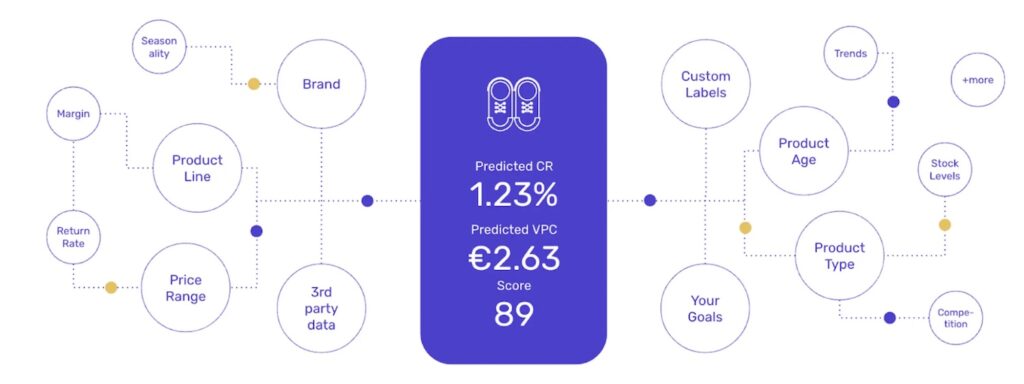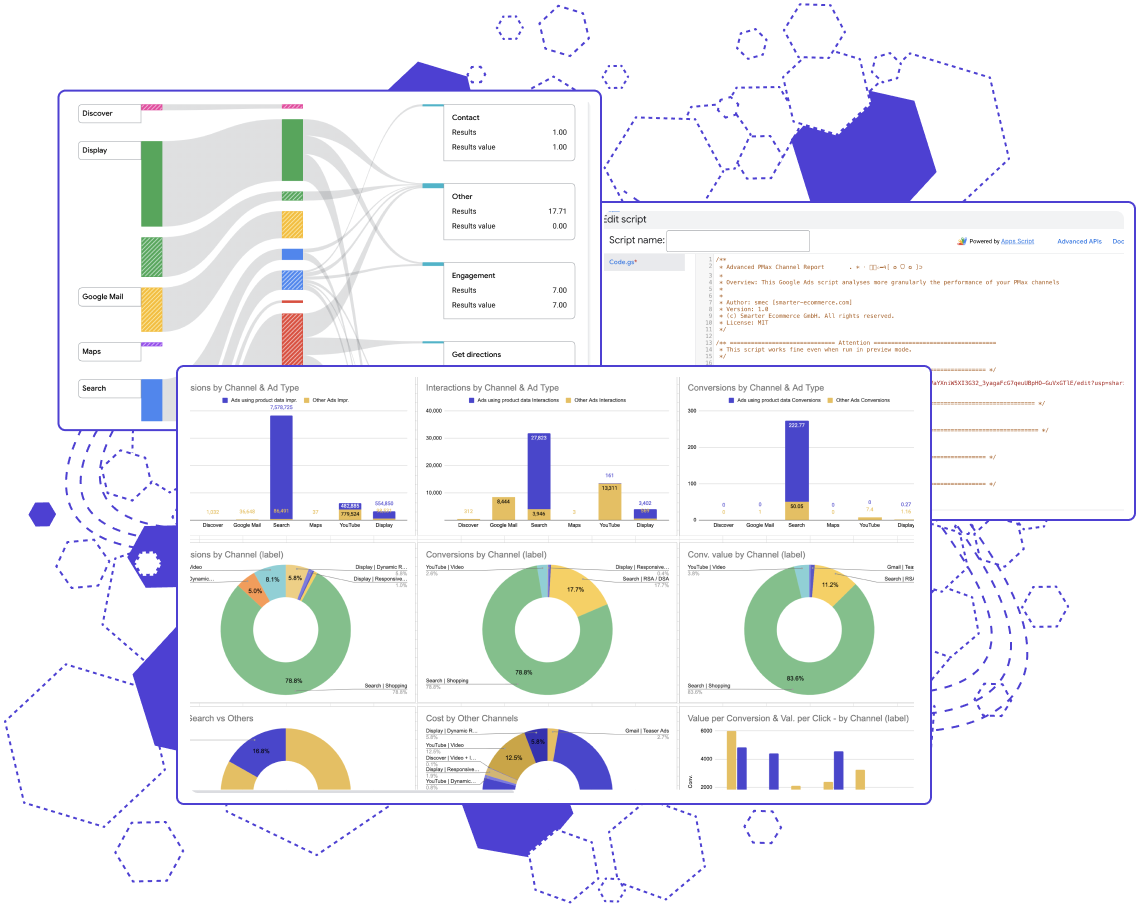Subscribe to join thousands of other ecommerce experts

Zalando's decision to ban high-return shoppers highlights a critical, margin-eating problem: high return rates are the #1 profit drain in ecommerce. This issue is often unknowingly amplified by Performance Marketing and PPC campaigns within Google Ads, especially AI-driven tools like Performance Max that are "profit-blind" by default. These tools chase a simple ROAS goal, not your actual profit, meaning they can't distinguish a high-profit, low-return item from a high-margin item with high return rates that will ultimately cost you money. This guide breaks down how to fix this, evolving your Campaign Structure by leveraging your own first-party data. This allows you to move beyond simple product groups to a true, profit-driven strategy using Multi-dimensional Product Segmentation and Dynamic Segments that react to real-time business needs.
In ecommerce, not all revenue is good revenue. A €150 sale that results in a €150 return isn’t just a lost sale; it’s a net loss when you factor in shipping, handling, and reprocessing.
This margin-eating problem has grown so large that e-commerce giants are taking drastic measures. You’ve likely seen the reports: Zalando is allegedly banning shoppers with “disproportionately high return rates.”
This move, from a company that built its empire on the “buy it all, try it at home” model, signals a breaking point. It’s a defensive move to stop the bleeding.
Table of Contents
The ‘fundamental’ problem with high return rates
Make no mistake: Beyond just banning customers, Zalando is also investing heavily in on-site tech to mitigate the inherent risks of item returns:
- Virtual Fitting Rooms that allow customers to add their measurements into the platform to see how each piece of clothing will likely fit them.
- A dynamic AI Size Advice guide (which they claim cut size-related returns by 10%) based on a customers previous purchases.
- Rich 360° content that helps customers see their potential purchase from all angles.
These are crucial, smart investments to build customer confidence.
But they both attempt to solve the problem after the shopper is already on the site or after they’ve become unprofitable.What if the real problem starts before they even click your ad?

Photo © Zalando
Why your AI ad campaigns are ‘profit-blind’
Take a hard look at your Google Ads campaigns. Today, AI-driven tools like Performance Max and Demand Gen are the engines of acquisition. They are built for incredible efficiency at scale.
But here’s the critical flaw: Google’s AI is built to chase the goal you set (like ROAS), not the business outcome you need (like profit).
By default, it is completely unconcerned with your actual, bottom-line profitability.
- It can’t tell that Product A (a €150 jacket) has a 40% return rate and razor-thin margins.
- It doesn’t know that Product B (a €80 accessory) has a 2% return rate and a 60% margin.
Your PMax campaign just sees a €150 conversion and an €80 conversion. It will almost certainly prioritize the “higher revenue” item, torching your budget to acquire a customer who, three weeks later, is going to cost you money.
Zalando’s fix is to ban them after the fact. A more fundamental and accessible fix is to stop bidding for them in the first place.
A Framework for Profit-Driven Advertising
Ultimately, you can’t control if a customer makes a return, but you can control where your budget is going. This means evolving from optimizing for a simple ROAS to optimizing for real profitability.
Here’s the framework to get you started:
1. Feed the AI Richer Conversion Data
Most advertisers just tell Google that a conversion happened. Using “Conversions with Cart Data” is a powerful step forward. It tells Google what was in the basket, allowing the AI to learn which specific products drive value, not just which ad led to a generic sale.
2. Segment Your Products by Business Goals
This is the single most powerful lever you have. You must stop segmenting by simple “best-sellers” and start segmenting by your real, critical first-party business goals.
- Profit drivers: High-margin AND low-return-rate items.
- High-margin, high-return items: AKA the ‘Zalando problem’
- Hidden Gems: New, high-potential products PMax would normally ignore.
- Inventory Clear-Out: High-stock items that need to move.
Once you have these segments, you can set different, strategic targets for each. Push the Profit Drivers aggressively. Pull back on the “Zalando Problem”—i.E. items with a higher, more protective ROAS target.

Photo © smec – Smarter Ecommerce
The gap between manual strategy and AI scale
This is where theory hits reality.
The challenge, as many retailers know, is that this level of granularity is hard to maintain.
To achieve its massive scale, Google’s AI needs to look at your whole product feed.
Additionally, your stock levels, margins, and return rates are dynamic. Manually pulling this data and constantly updating your campaign structure is a massive operational lift.
This is where the next generation of ad tech is focused: bridging the gap between AI-driven scale and strategic, profit-driven control.
(Full disclosure: this is the exact challenge our team at smec is focused on.)
This philosophy—the need to integrate messy, crucial business data (margins, returns, stock) directly into the AI—is the core reason we built our smec Campaign Orchestrator.
It’s designed to act as that dynamic control layer on top of PMax. It turns your business goals from static, manually adjustable segments into Dynamic Segments the AI can understand and act on automatically.
- An item’s stock level drops? It moves out of the “Inventory Clear-Out” segment.
- A high-margin product’s return rate creeps up? It gets shifted into the “high-margin, high-return” segment with its higher, more protective target.
This approach lets you keep all the efficiency of Google’s AI but finally pairs it with the granular, profit-driven control your business actually needs.
Case Study: Making profit a strategic lever
This profit-first mindset is all about spotting the profit-drains Google’s AI is blind to.
PMax might see two €100 sales as equal, but one might cost €5 to ship from one warehouse and the other cost €15 to ship from another.
Take our client, LOOKFANTASTIC, for example.
We helped them feed that live warehouse data directly into their campaigns, prioritizing items from their most cost-efficient locations. They stopped chasing ’empty revenue’ and steered the AI toward actual profit.The result? A +39% increase in daily revenue in Germany.

Photo © smec – Smarter Ecommerce
Stop blaming customers, start building smarter ads
Zalando is right to be obsessed with the cost of returns. But that’s only one piece of the puzzle.
For most retailers, the most immediate and high-leverage change you can make is at the acquisition level. The fundamentals of sound performance marketing—analyzing your own profitability data and building an ad strategy around it—are more critical than ever.
Stop blaming your customers for returning items. Start building a smarter ad strategy that doesn’t acquire them at a loss.
🎧 Want a deeper dive?
Returns are a margin-eating nightmare. In the newest episode of our Growing Ecommerce podcast, our experts Mike Ryan and Chris Scharmueller break down the “Zalando Problem” in full.
We discuss how even the most powerful AI campaigns can be profit-blind and how to build a smarter, profit-driven ad structure that stops the problem at the source.

